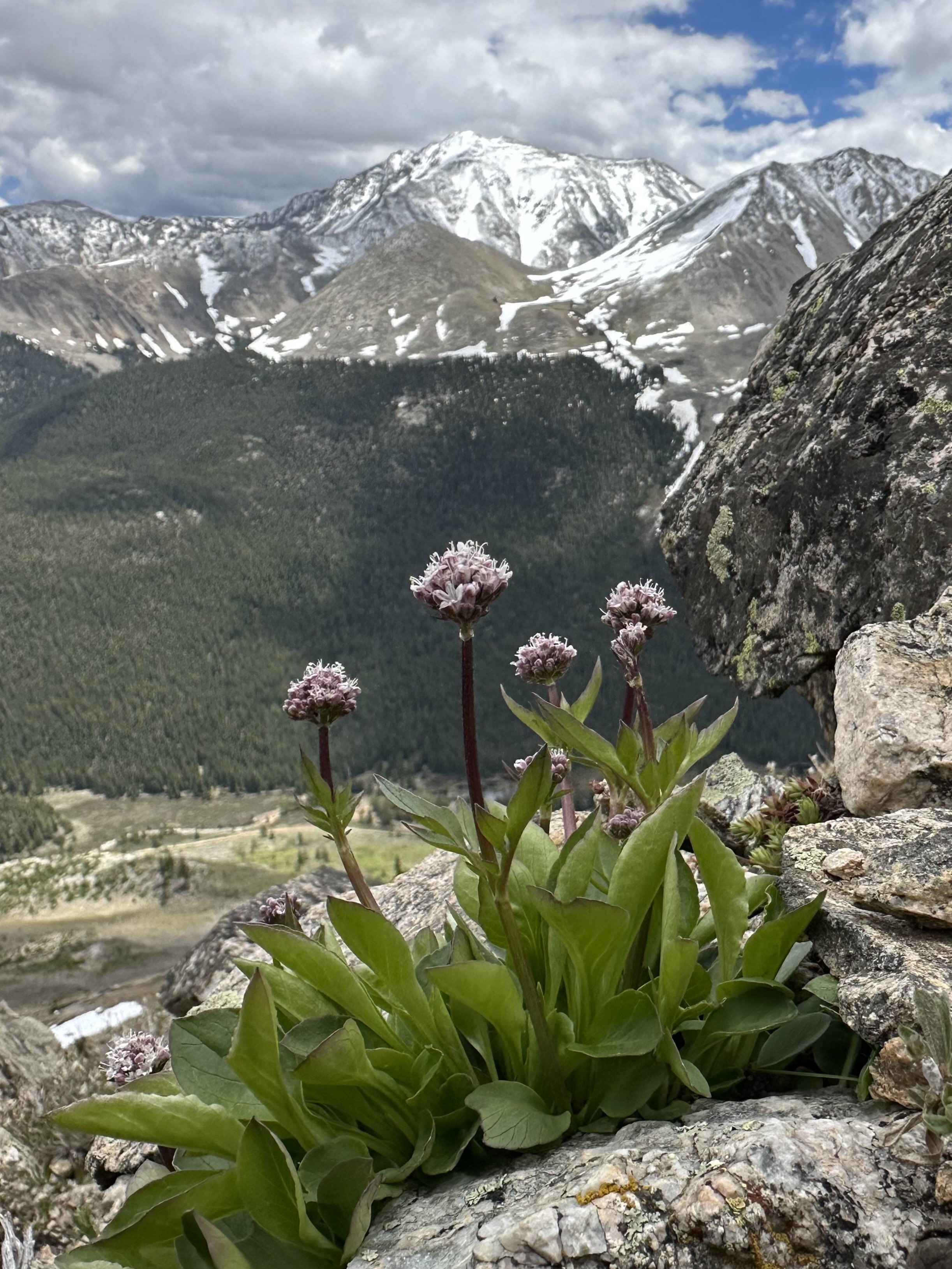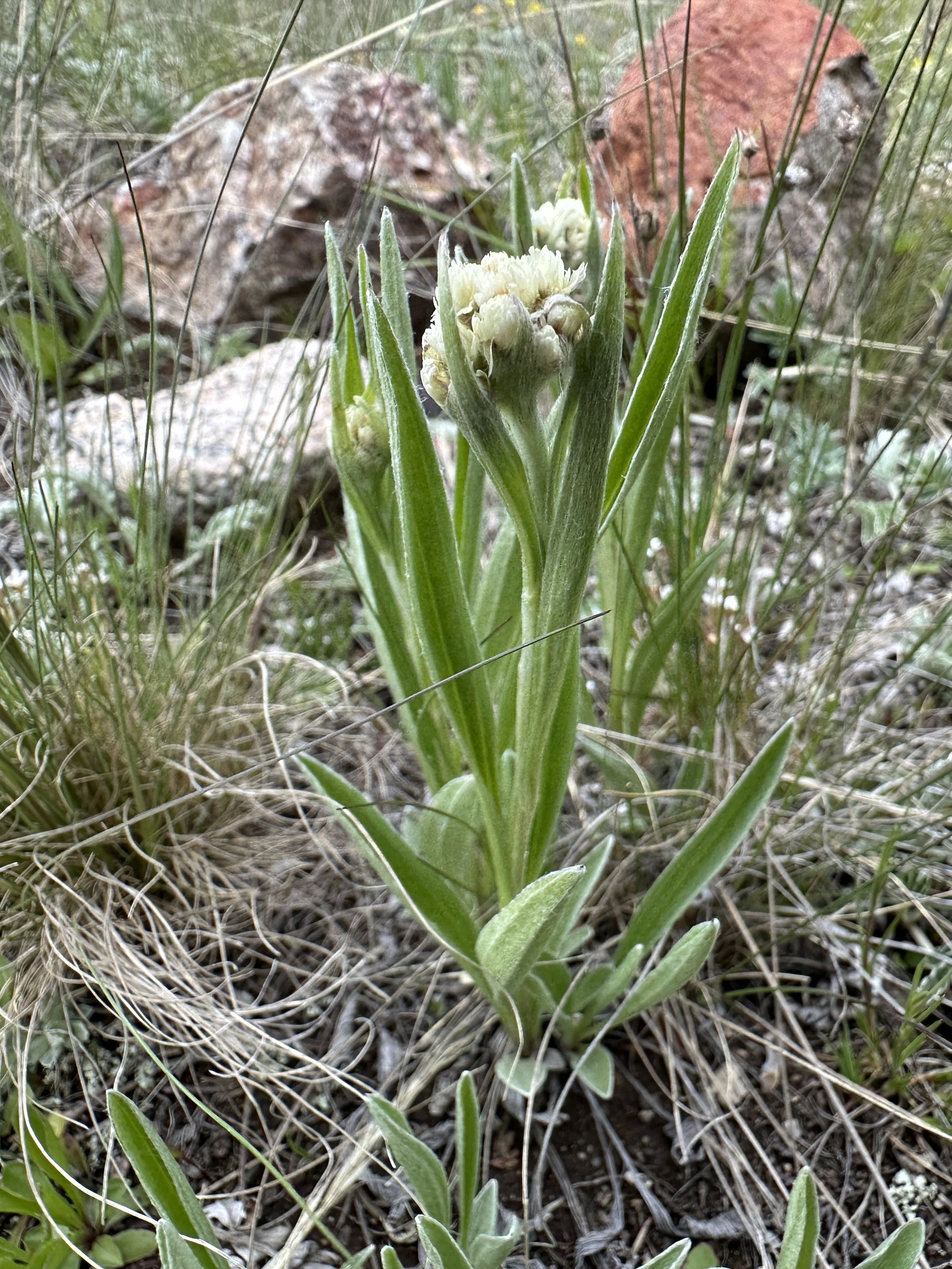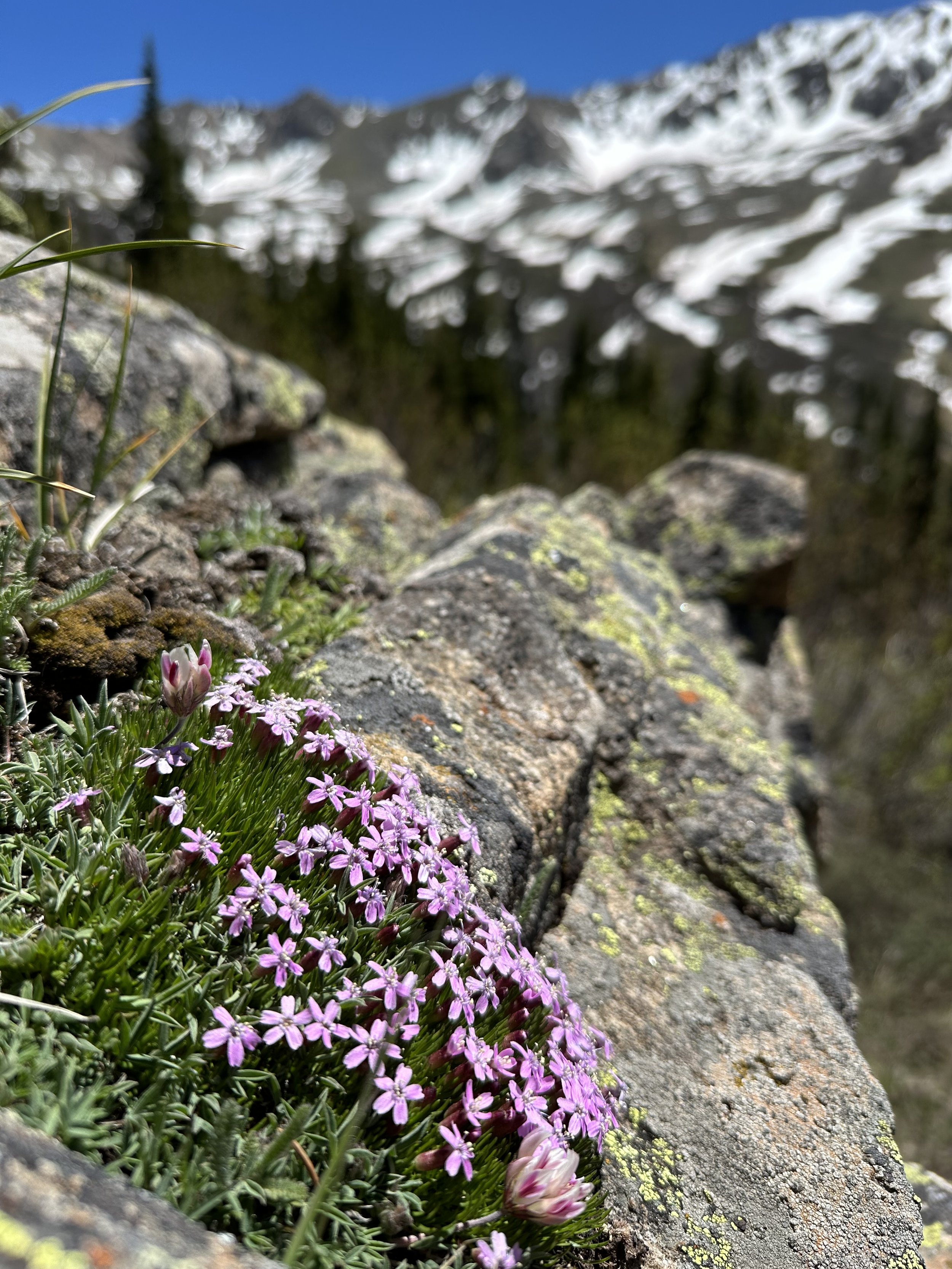Potentilla pulcherrima, June 20, 2023
Backside of leaf
Common & scientific names
Beautiful cinquefoil, Potentilla pulcherrima
Family
Rose, Rosaceae
Location
Difficult Trail, 8,200’
Fun, weird, helpful, or little known facts
Cinquefoils all have basically the same-looking yellow flowers (except P. arguta, which is white). With the cinquefoils, everything depends on their leaves and their location/elevation.
P. pulcherrima is abundant throughout our area at lower elevations (never alpine). As you’ll see in the photo, P. pulcherrima’s leaflets extend out from a single point. As seen in these photos, they are green on the “front” side and fuzzy-white-hairy on the “back”








































